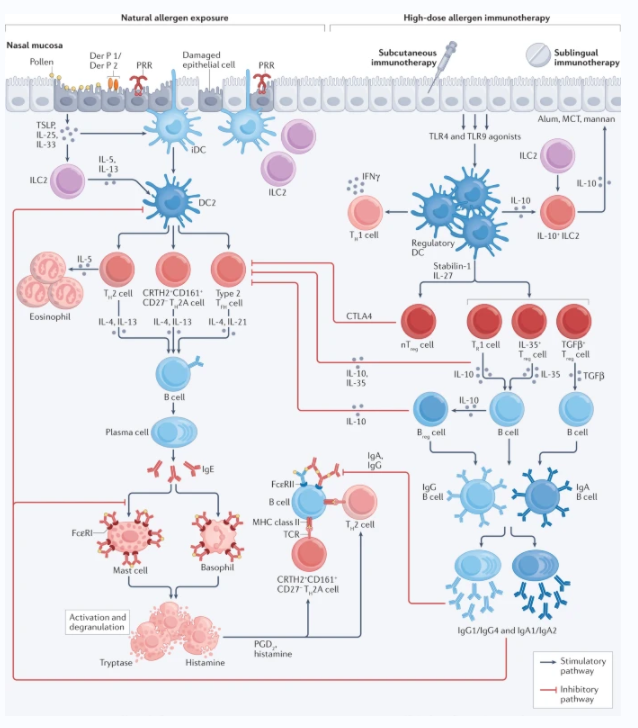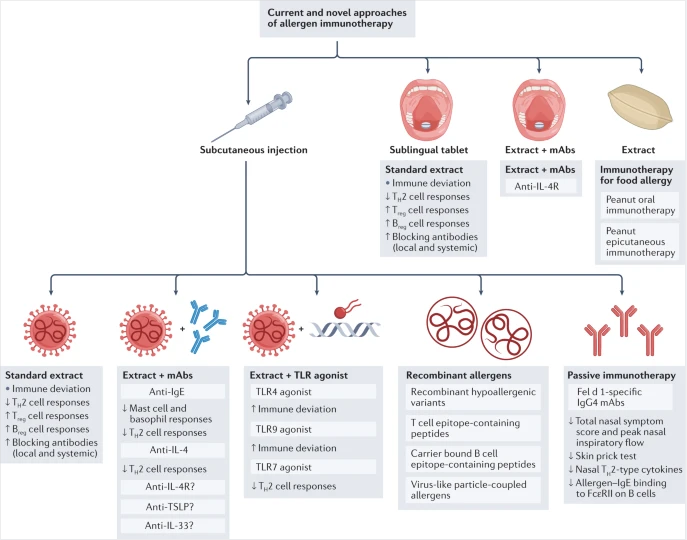In individuals with atopic allergy, natural exposure to low concentrations of environmental allergens results in allergic inflammation involving IgE-mediated activation of mast cells and tissue eosinophilia, events under the regulation of TH2-type cytokines. In 1921, Prausnitz and Kutsner were the first to demonstrate the passive transfer by a serum factor (referred to as “reagin” and, subsequently in 1966, characterized as IgE of immediate cutaneous IgE sensitivity. In 1935 Cooke and colleagues showed that “protective immunity” after allergen immunotherapy could also be transferred passively. They showed that serum obtained after immunotherapy from individuals with ragweed pollen hay fever, when injected intradermally into sensitized untreated controls, could block the immediate cutaneous response to ragweed pollen. These two observations illustrated for the first time that hypersensitivity (allergy) and protective immunity (immunotherapy) were dependent on passively transferable serum factors that were subsequently identified as allergen-specific IgE and allergen-specific IgG/IgA-associated IgE-blocking activity, respectively. Figure1. Mechanisms of allergic inflammation and immunotherapy. Although regarded as the gold standard, allergen immunotherapy given by subcutaneous injection requires specialist supervision owing to the risk of allergic side effects including anaphylaxis. In the USA, allergen extracts are prepared in 50% glycerin, which acts as a preservative and stabilizer, whereas in Europe extracts are alum-precipitated, which slows the release of allergen on injection and reduces immediate allergic side effects. In recent years, there have been attempts to improve the safety and convenience for patients whilst retaining efficacy of allergen immunotherapy. These include the use of modified allergens (known as allergoids) and alternative routes of immunotherapy, as discussed below. Figure 2 summarizes the current and novel approaches for allergen immunotherapy. Figure2. Current and novel approaches of allergen immunotherapy.
Source from: Durham SR, Shamji MH. Allergen immunotherapy: past, present and future. Nature Reviews Immunology 2022. doi: 10.1038/s41577-022-00786-1. |














